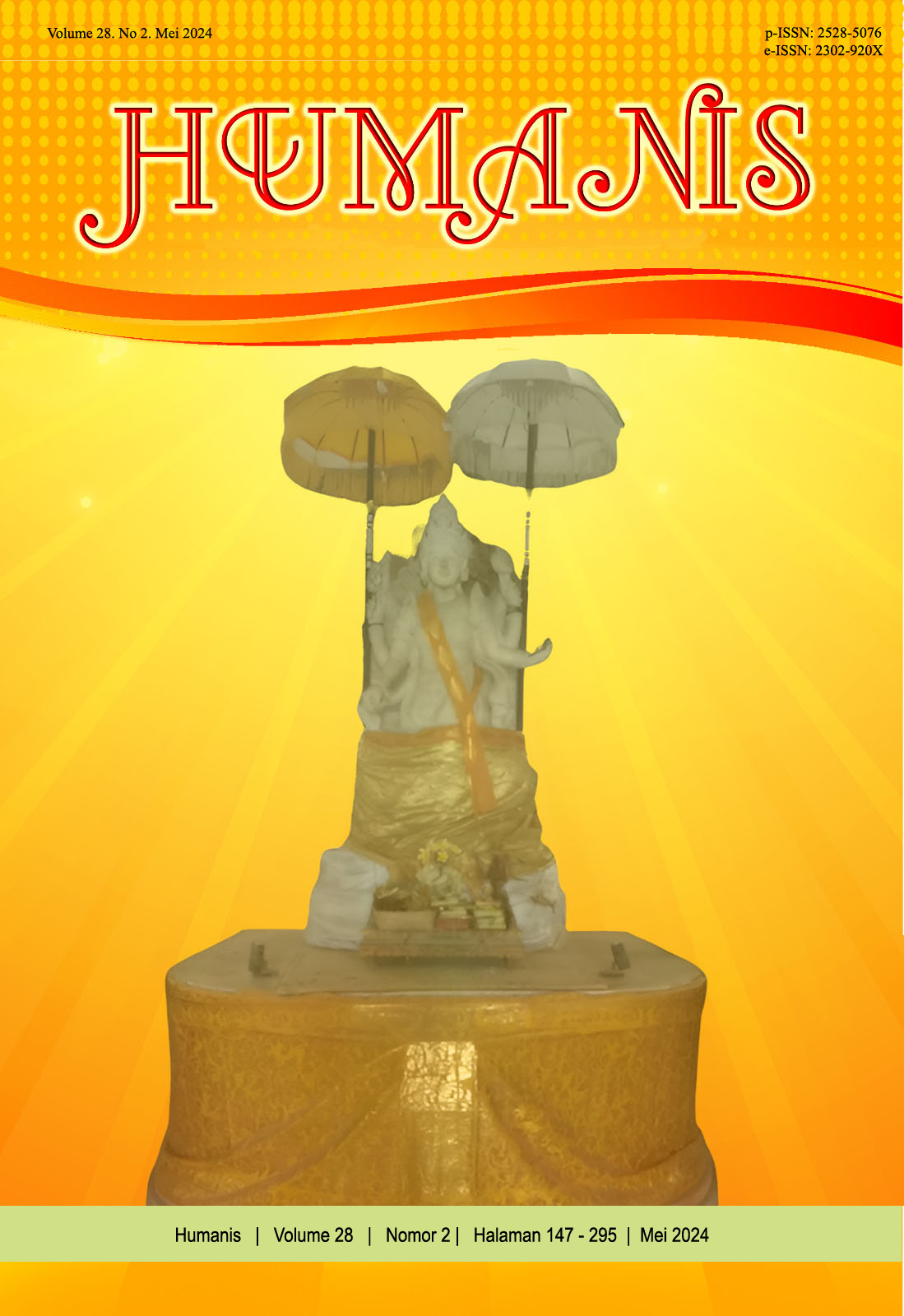Inggris-Sasak: Perubahan Fonem /f/ dan /v/ dalam Bahasa Inggris oleh Pedagang Asong di Sekitar Sirkuit Mandalika Lombokrcuit Lombok
Abstract
This research is a phonological study that focuses on changes in the phoneme /f/ and /v/ in the use of English by hawkers around Mandalika Circuit, Lombok. This study aims to classify the forms and factors of phoneme changes /f/ and /v/ in the use of English by hawkers around Mandalika Circuit. The method of this research is descriptive qualitative. The data is the utterances containing phonemes /f/ and /v/ from 25 hawkers. The intralingual identity method is used to analyze the form of phoneme change, and Weinreich’s theory (1979) is used to analyze the factors of phoneme change. The result shows that the phonemes /f/ and /v/ changed because the Sasak language did not have the phonemes /f/ and /v/, so there was a process of simplifying English into the Sasak language and creating local English variation. The local English variation is created due to the bilingualism of hawkers, low loyalty to English, and getting into a habit of Sasak language.
Downloads
References
Beratha, N. L. S. (1999). Variasi Bahasa Inggris pada Kawasan Pariwisata di Bali. Humaniora, 11(3), 122–131.
Beratha, Ni Luh Sutjiati, Sukarini, N. W., & Rajeg, I. M. (2021). “Balish”: Bahasa Inggris Dialek Pekerja Parawisata di Kawasan Wisata Kuta Bali. Jurnal Kajian Bali, 11(2). http://ojs.unud.ac.id/index.php/kajianbali
Buba, J. A. A., Al-Shujairi, Y. B. J., & Ya’U, M. S. (2016). Attitude regarding Nigerian Pidgin English among Nigerian students in Malaysia. International Journal of Applied Linguistics and English Literature, 5(2), 232–237. https://doi.org/10.7575/aiac.ijalel.v.5n.2p.232
Cahriani, N. W. E. (2016). Mother Tongue’s Interference In Pronunciation Of English Fricative By Balinese Housekeeping Employees In Westin Resort Nusa Dua Bali. Humanis, 14, 96–103. https://ojs.unud.ac.id/index.php/sastra/article/view/19373
Hornby, A. S. (2000). Oxford Advanced Learner’s Dictionary of Current English (S. Wehmeir & M. Ashby (eds.); Sixth edit). Oxford University Press.
Kridalaksana, H. (2008). Kamus Linguistik. Jakarta: Gramedia Pustaka Utama.
Mahsun. (2019). Metode Penelitian Bahasa: Tahapan Strategi, Metode, dan Tehniknya (Edisi Keti). Rajawali Press PT RajaGrafindo Persada.
Maulid Taembo. (2016). Kajian Dialek Sosial Fonologi Bahasa Indonesia. Kandai, 12(1), 1–16.
Murcahyanto, H. (2014). Pengaruh interferensi tuturan bahasa Sasak dalam tuturan bahasa Indonesia pada masyarakat desa Kalijaga. Educatio, 9(1), 1–12. https://e-journal.hamzanwadi.ac.id/index.php/edc/article/view/50
Ola Unagolok, V. B. (2014). Language Contact Between Tourists and Traders in Kuta. Humanis, 8.
Roach, P. (1991). English Phonetics and Phonology (second edi). Cambridge University Press.
Swandriani, K. A. (2016). Pidginized English Used By Massage Therapists In Kuta Beach Bali. Humanis, 15(2), 113–118.
Swari, M. Y., Laksminy, L. P., & Ediwan, I. N. T. (2016). Pidginized English Formation By Traders At Kerthagosa Museum. Humanis, 16, 181–188. https://ojs.unud.ac.id/index.php/sastra/article/view/33399
Taqi, H. (2023). Exploring a Kuwaiti English Pidgin Within Kuwaiti Households: a Sociolinguistic Investigation.
Dialectologia, 30(2023.30), 219–242. https://doi.org/10.1344/dialectologia2023.30.9
Utami, N. P. C. P., & Santika, I. D. A. D. M. (2019). Analisis Interferensi Bahasa Inggris oleh Pedagang Acung di Kawasan Pariwisata Kuta Bali. Seminar Nasional INOBALI 2019 Inovasi Baru Dalam Penelitian Sains, Teknologi Dan Humaniora, 443–450.
Wardana, K. (2014). Kesalahan Artikulasi Phonemes Bahasa Inggris Mahasiswa Prodi Bahasa Inggris Unmas Denpasar; Sebuah Kajian Fonologi Generatif. Jurnal Bakti Saraswati, 3(2), 77–87. https://web.archive.org/web/20180413070404id_/http://ojs.unmas.ac.id/index.php/Bakti/article/viewFile/70/45
Wee, L. H. (2008). Phonological patterns in the Englishes of Singapore and Hong Kong. World Englishes, 27(3–4), 480–501. https://doi.org/10.1111/j.1467-971X.2008.00580.x
Wei, L. (2020). Multilingual English users’ linguistic innovation. World Englishes, 39(2), 236–248. https://doi.org/10.1111/weng.12457
Weinreich, U. (1979). Languages in Contact: Finding and Problem. The Hague.
Xu, Z., & Deterding, D. (2017). The playfulness of ‘new’ Chinglish. Asian Englishes, 19(2), 116–127. https://doi.org/10.1080/13488678.2017.1292445
Yunira, N. P. K. C., Triediwan, I. N., & Putra, I. K. S. (2020). Pidginized English Formation by Art Shop Attendants in Seminyak Street. Udayana Journal of Social Sciences and Humanities (UJoSSH), 4(2), 79. https://doi.org/10.24843/ujossh.2020.v04.i02.p07


















